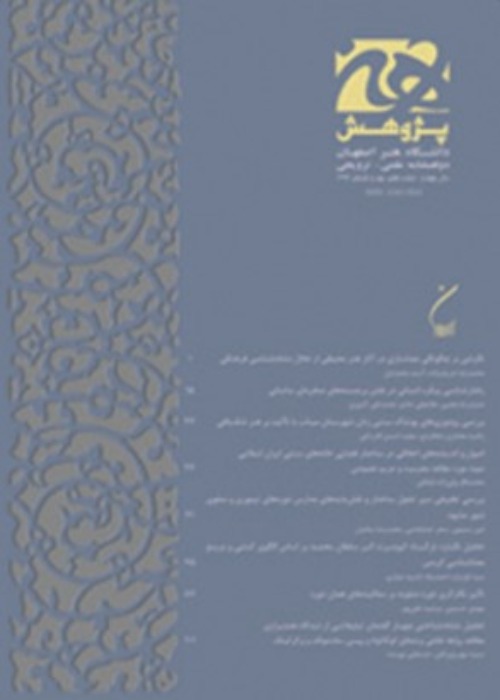The Role of the German Researchers in the Formation of Islamic Art Studies
In the beginning of the nineteenth century, with the increasing interest of the Europeans in the culture of the East, the first articles on Islamic art and culture appeared in German-speaking countries. In the mid- nineteenth century, some entries in German encyclopedias were devoted to Islamic art, and from the end of the century, the first monographs on Islamic architecture and ornament were published. These texts were written by historians of European art, who analyzed Islamic art and architecture based on European aesthetic principles. At the beginning of the twentieth century, scientific studies in this area were started. Researchers such as Friedrich Sarre, Ernst Herzfeld, Ernst Kühnel and Richard Ettinghausen played an important role. By searching among German books and papers published in the nineteenth and early twentieth centuries, this article seeks to answer the questions of how these studies were formed and evolved in Germany. It can be said that in the scattered research of the nineteenth century, no chronological development can be observed.
Among the important events of the first decade of the twentieth century, we can mention the publication of the first books on Persian architecture, carpets and metalwork, the establishment of the Museum of Islamic Art in Berlin, and the exhibition of “Masterpieces of Muhammadan Art” held in Munich. This exhibition and its catalogue were a turning point in the academic studies of Islamic art not only in Germany but in the entire Western world. In the second decade of the century, the first scientific excavation in an Islamic site was done by Herzfeld, and the first comprehensive book on Persian painting was published by Fredrik Martin.
The first two decades of the twentieth century can be considered as the period of introduction and classification of Islamic art that researchers tried to establish chronology and attribute objects through stylistic comparisons and examination of their formal qualities. In the third decade, the meaning of the works based on historical and cultural contexts or the iconographic studies were followed in Hamburg, and after the rise of the Nazi Party, Ettinghausen continued it.
- حق عضویت دریافتی صرف حمایت از نشریات عضو و نگهداری، تکمیل و توسعه مگیران میشود.
- پرداخت حق اشتراک و دانلود مقالات اجازه بازنشر آن در سایر رسانههای چاپی و دیجیتال را به کاربر نمیدهد.


